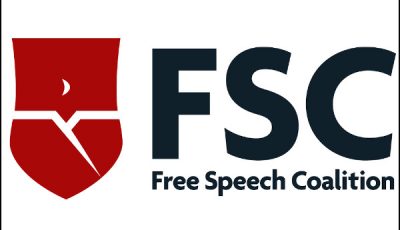An Old Case Reminds Us How Dumb Obscenity Law Can Get
 CLEARWATER, Fla. – For as much concern as the prospect of an obscenity law-enforcement “crackdown” has caused within the adult entertainment industry over the decades, obscenity prosecutions are something you rarely hear about these days.
CLEARWATER, Fla. – For as much concern as the prospect of an obscenity law-enforcement “crackdown” has caused within the adult entertainment industry over the decades, obscenity prosecutions are something you rarely hear about these days.
Sure, there were some minor rumblings of trepidation within the industry in connection with a pre-election pledge Donald Trump signed as a candidate, by now I think many of us have concluded Trump’s porn pledge was roughly as meaningful as his description of Trump University faculty as “handpicked instructors” – a description Trump later defended as mere “puffery.”
While there have been some high-profile obscenity prosecutions in the last 20 years, the last time there was something which could be reasonable described as a coordinated anti-obscenity campaign was during the single-term administration of George H.W. Bush.
Still, however rarely they may be enforced by federal or state authorities, obscenity laws remain on the books across the country, waiting to be applied – sometimes ridiculously – by prosecutors who are so inclined.
Every so often, something comes across my radar to remind me just how absurd obscenity law is, not just as-applied, but in its very structure. Late last month, for example, a headline grabbed my attention: “A Cartoonist Charged With Obscenity and More Art This Week.”
My initial assumption was that a cartoonist had recently been charged with an obscenity crime – a reasonable bit of speculation, I think, given the wording of the headline. As soon as I saw the name of the cartoonist in question however, long-buried memories of obscenity cases past came flooding back to me.
If the name Mike Diana doesn’t ring any bells for you, I’m not surprised. His case played out in the mid-90s, back when “internet porn” was something only a very small number of people would even recognize as a legitimate term, much less have any personal experience with to that point in their lives.
To be clear, Diana wasn’t a pornographer – he was a self-published cartoonist, occasional petty crook and minor miscreant. An old article published by Mother Jones provides a good summary of the acts which got Diana in trouble – as well as a window into how ridiculous the application and logical underpinnings of obscenity law are.
“American courts have decided that rights of free expression cover a broad range of filth, hate, and violence,” correctly noted Sean Henry, the author of the Mother Jones piece. “The sole trip wire that slams the First Amendment shut is sexually arousing material. In other words, you can be as disgusting and violent as you want, as long as nobody gets turned on.”
Reading over the descriptions of Diana’s work, it’s difficult to imagine any of it being arousing to anyone – but that point didn’t much help Diana in court, because there’s legal precedent (in the form of Mishkin v. New York) which holds that “(w)here the material is designed for and primarily disseminated to a clearly defined deviant sexual group, rather than the public at large, the prurient appeal requirement of the Roth test is satisfied if the dominant theme of the material taken as a whole appeals to the prurient interest in sex of the members of that group.”
So, if you accept there’s some “deviant group” out there to whom a hand-drawn depiction in which “a child is sodomized by his adoptive father, who is killed by the family dog… The boy thinks he’s finally free until the dog picks up where the dad left off” would appeal to their “morbid, degrading and unhealthy interest in sex,” then Diana’s work qualifies as material which may be considered “obscene” by that term’s legal definition.
The question, one to which only the jurors in Diana’s case know the answer, is whether they convicted him because of the legal standards at play, or despite of those standards. After all, as Henry observed in his accounting of the case, “what may have tipped the scales against Diana was the very political content that should have saved him.”
Diana’s cartoons made targets for criticism out of a variety of public figures and there are clear sociopolitical themes embedded in all that gross, profane imagery. The Roman Catholic Church was one such target, as was the very notion of governmental authority in all its various forms.
Theoretically, such political content and comment (however crude and nasty the jury found it to be) should have helped acquit Diana. Instead, according to experts who watched the case unfold at the time, it likely spurred on his conviction.
Adding to the insanity surrounding Diana’s case was one term of his supervised probation – a condition which ought to send chills up the spine of anyone who cherishes personal liberty and/or abhors the idea of thought-policing, regardless of what they might think of Diana’s art.
“(Judge) Fullerton ordered Diana to follow a state-supervised program to rehabilitate his thinking,” Henry notes. “Diana was required to undergo psychiatric evaluation and take an ethics-in-journalism class. Finally, Diana was to submit to unannounced, warrantless searches of his personal papers by the police and deputized probation officers from the Salvation Army. Any drawings, any letters to family, any feelings Diana might want to keep in a diary could be seized.”
Diana appealed his conviction and the terms of his probation, but those appeals were all unsuccessful. As the display of his work at the Superchief Gallery demonstrates, Diana has not given up cartooning, and has rebounded reasonably well from his ordeal, all things considered. (It all might have been much worse had Diana been convicted of a felony obscenity violation, by the way – a move which may have prevented him from relocating to New York and avoiding extradition on his later alleged probation violations.)
Still, Diana’s provides an object lesson in something which is important for anyone in the adult entertainment industry to recognize: Even the dumbest applications of obscenity law can disrupt your life, deprive you of cherished civil liberties and lead you down the road to pariah status.













